Are your bearded dragons legs not working? Two possible causes for a bearded dragon’s legs to stop working are impaction and metabolic bone disease (MBD), or nutritional secondary hyperparathyroidism (NSHP). This article focuses on NSHP.
Article by Dr. Donald Buchanan (DVM), companion animal veterinarian practicing in Nova Scotia, Canada.
Signs of MBD in Bearded Dragons
Common signs of both impaction and NSHP include weakness, constipation, a decrease in activity and at some point, can result in the bearded dragons’ legs to stop working. These signs, of course, could be indication of many problems including NSHP (metabolic bone disease) and impaction. Impaction is a common issue which can often be resolved with bathing, unlike NSHP.
Animals severely affected with NSHP will have weakened bony structures and may show signs such as:
- Muscle twitching,
- Uncontrolled tremors,
- Seizure like activity,
- Paralysis,
- Bone deformities,
- Legs that are positioned abnormally,
- Fractured bones including spine,
- Legs and tail, (any of which could stop your bearded dragons’ legs from working), and
- A softened rubber-like jaw.
NSHP can often predispose a bearded dragon to developing a fecal impaction. A combination of pain, dehydration, pelvic deformities, and fecal impaction are all at play here and will all contribute to the bearded dragons’ legs to stop working.
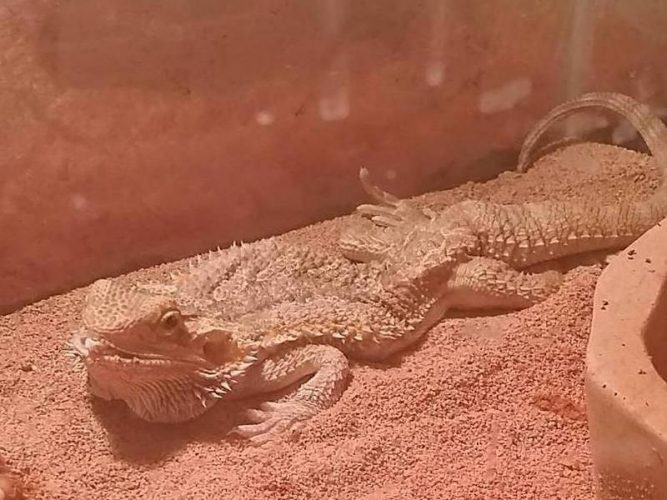
Causes and Prevention of Nutritional Secondary Hyperparathyroidism (NSHP)
Although this is a metabolic disorder, it is almost always secondary to poor husbandry practices. The bearded dragon is typically thought of as a “beginner” reptile and often subject to a well-meaning pet owner’s collection of beginner mistakes in husbandry practices.
NSHP is often life threatening but preventable through proper husbandry and feeding; and if caught early, can potentially be treated.
When the body senses the imbalance of calcium in the blood it sets to balancing out the levels by pulling the calcium out of its own skeleton! The body is using the bones as a reservoir for calcium.
This extremely painful condition is usually caused by a diet with an improper calcium to phosphorus ratio, with either diets high in phosphorus, or too low in calcium or vitamin D3. See the post on Guide to Calcium and D3 to resolve calcium and D3 issues. Other causes include improper levels of light exposure and temperature, too much fat in the diet or excessive oxalates.
Take time to understand what lighting is needed for a bearded dragon. Establish a habitat with the correct lighting, heating, humidity and accessories. How well the bearded dragons housing is setup directly impacts the wellbeing of the reptile.
UVB bulbs need to be installed and regularly replaced as per manufacturer’s instructions. Vitamin D3 is produced within the body as a response to light exposure, and helps the body utilize calcium. Typically, bulbs need replacing at least annually. Exposure to natural sunlight is best, but indoors a UVB light is needed to supplement natural light exposure. To check your lighting setup in your bearded dragons housing see the article Setting Up Bearded Dragon Heating and Lighting.
Access to direct sunlight without any barriers at least weekly can go a long way to making up for errors in UVB lighting. You will find ideas for outdoor housing for your bearded dragon in the article Housing for Bearded dragons.
A suitable balanced diet needs to be provided. A diet with a balance of calcium and phosphorus is essential. Consider dark leafy greens dusted with a commercial balanced calcium and vitamin D3 supplement. Gut loaded live insects can also be dusted in the calcium and vitamin D3 supplement and should be fed several times weekly in addition to a commercially prepared diet. Proper temperature exposure is important for digestion.
Metabolic bone disease (MDB) is preventable through proper care at home. If you feel that your bearded dragon is affected, I strongly recommend making the proper changes to diet and habitat and make an appointment with your veterinarian. Remember, most early cases are treatable, but the vast majority present too late in the course of the disease to make significant progress.
What to do if you think your Bearded Dragon has NHSP
If you suspect your bearded dragon has NHSP, call your vet. There are no home cures for NHSP. Once the condition manifests, it requires veterinarian attention.
Use extreme care when handling your reptile with this condition and only handle it if absolutely necessary. This condition is extremely painful, and their bones are very fragile. The slightest bump or twist could cause a fracture, or even be fatal.
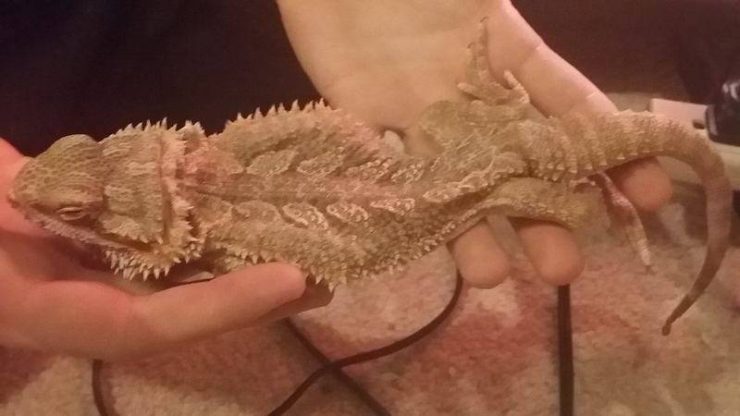
How NHSP is Treated
Most cases of NHSP are taken to a veterinarian late in the course of the disease, if at all, making successful treatment difficult. The longer the reptile is without treatment, the less likely it will survive. It should go without saying that if at any point you feel that your pet is sick or unwell, contact your veterinarian immediately.
Reptiles suffering from NHSP often mask clinical signs as the body attempts to regulate calcium levels by slowly depleting bone stores.
Treatment is often prolonged, taking several months, and can be fairly expensive. As is often the case, if the animal is too severely affected, treatment often fails, so naturally, prevention is ideal.
What will the Vet do?
Often NHSP is a diagnosis made by physical exam and a detailed history. This is usually done quickly in the exam room and is not overly expensive. Depending on how badly the animal is affected, blood work, x-rays, or more advanced imaging may be advised, although results often are not 100% diagnostic. X-rays may still be useful in detecting fractures and are a great first step in creating a baseline for measuring recovery over time. From here, the vet will help you decide which treatments to consider.
What Kind of Treatment is Available?
The treatment available depends greatly on the severity of the disease in your bearded dragon. Supplementation with calcium, and vitamin D3 are often indicated, whether orally, or via injection. Warm water baths may help relieve constipation and help treat dehydration. Fluid therapy, and assisted feeding are both often part of the nursing care needed for these pets.
It is important to know that although after a short course of treatment, your pet may start to look and feel much better, treatment may need to be continued for several months.
Medical management should also incorporate a detailed assessment of your enclosure at home including temperature, light exposure (Sunlight and UVB) and potential hazards (i.e. rocks and sticks may pose climbing or falling danger, water dishes may be a potential drowning site).
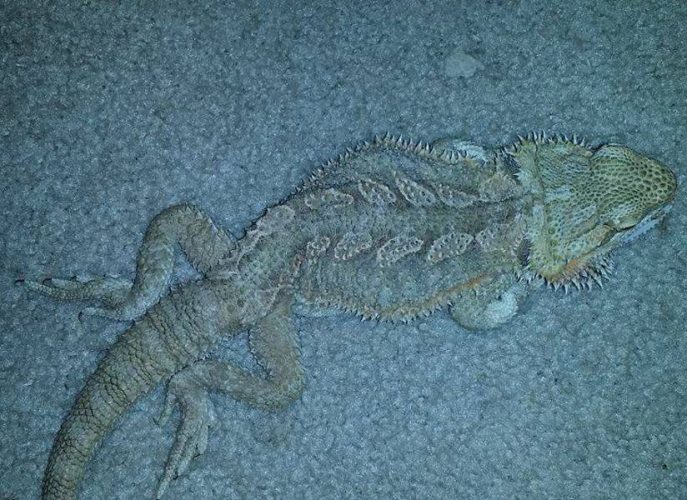
Not all veterinarians are comfortable treating “exotic” animals. If you have not already lined up a vet who will treat exotics as part of your routine care plan, then be sure to ask around to your local clinics until you find a veterinarian comfortable treating your pet.
Veterinary costs are often the largest barrier to care for most reptile owners (second maybe to difficulty finding a veterinarian). Never hesitate to ask for a cost estimate, veterinarians deal with cost constrained pet owners every day – this does not mean you don’t want the best treatment for your pet.
Dr. Buchanan is a companion animal veterinarian practicing in Nova Scotia, Canada.
Vets articles you may be interested in:
- Sugarland Animal Hospital (2017) Sick bearded dragon? Queensland, Australia.
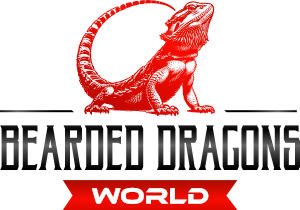
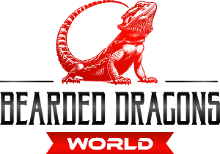


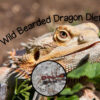
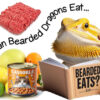

I believe I have a Bearded dragon with this issue I am already trying some of these things but I can’t tell if it is working again it’s only been two days but any. Assistance you could give would be greatly appreciated due to the bearded dragon was a gift for my two-year-old son with me taking care of it
So many variables and a lot of suffering that can be endured so it really is best to consult a vet. In the meantime providing direct, real sunlight and warmth, not filtered by glass or other barriers at least a few hours a day. Look at what is in the diet. Reduce high oxalate and fat content. Age matters, how old is it?